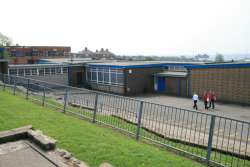FIFTY YEARS ON!
VISITING THE OLD SCHOOL 2007
Recollections and thoughts of Dr Alan J. Jones
I left the district that was “so good” and “so bad” in the more formative years of my life, to settle in Australia in 1964, having spent from 1951 as a 13+ entry at “The Tech”, then based in Moorland Road with an increasing frequency of visits to the new single wing at “Stanfields”. That journey embraced many a lunch time walking through Burslem Park, up Hamil Road and onto High Lane. If there were classes at Stanfields in the mornings the route was still via Burslem, and a second bus; or a jump off the bus at what used to be Whitfield’s railway crossing and walking up passed the brickworks over industrial waste dumps, which today are occupied by green pastures and Council houses.
I had been back to the “old” school on several occasions not least the year I graduated from Keele to take on the deceased Jim "JEB" Baileff’s role as the Chemistry teacher, in Bill Pott’s words: “to help round off the 6th formers preparing for their A-level GCE”. This was the final term in 1961, but the Stanfields site was occupied by the entire school and I became very familiar with the new Chemistry Labs, etc. I dropped in a few years later during my period as a post-doc in the USA (1968), but my interest ceased when the old school became a “local comprehensive”, and my old prejudices about having girls at the same school came to the fore.
The most recent visit was triggered by nostalgia, and a desire to finally obtain some decent photos of the Honour Board, which I had been so proud to discover, bore my name and that of a lot of my mates who graduated from Universities far and wide from 1961. Many of these guys had formed the first lower-and upper-6th forms and progressed to do “A-levels” and on to university in 1957; some others used alternative routes to higher education and also graduated in this era. Yet others who did not choose the university direction, became managers, distinguished scientists, the best of engineers, major players in the financial markets, and clergymen.
So, what was it like to tour the old Moorland Road building 50 years on? Now called Haywood House, the building has taken on some of its “pre-Tech” days of the former Haywood Hospital. When the Burslem Community Development Trust (BCDT) took on the building in 1995, they were faced with an interior suffering from every “disease” a building can have. They had little alternative to gutting the place, but with retention of the façade. It is perhaps not too surprising that my attention was initially to the outside buildings at the back, since the old playground still echoed with the sound of the guys who’d marched across the tarmac to drop their bikes into the brick shed, or move on to Mr George’s or Mr Brownsword’s metal work classes (Photo 1). The alley-way between these two buildings was no longer occupied, even by the forges of the old days. I was attracted to look into the old “Machine Shop”, to find it was now disappointingly a signwriters’ storage area (Photo 2). The other “Filing Shop” (Photo 3) used at junior levels was now the storage room of BCDT, and there my host showed me the Mural of “Suffer Little Children to Come Unto Me”, (Photo 4) that had occupied ‘Pansy Mountford’s’ English class room, and which had been restored and remounted only to still be looking for a suitable home. It is that memory and that tile-mural that reminds us that “The Tech” had a life before a school as that of a hospital. Indeed the aforementioned metal work shops formed the old morgue of what was the Haywood Hospital of the 1920’s.
Incidentally, any volunteers to look after the future destiny of the mural would be welcomed, if you send me an e-mail. (Ed. The mural has apparently now been given a new home in the Swan Bank Methodist Church)
Photo 1: Current View Across the Old Playground
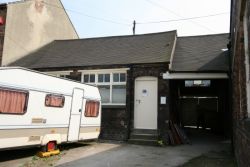
Photo 2: The Old “Machine Shop” Premises
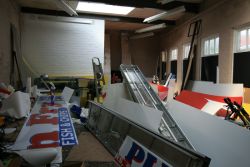
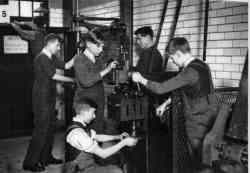
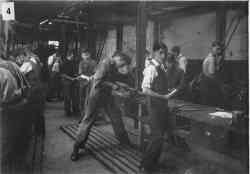
Photo 3: The Old “Filing Shop” Premises.
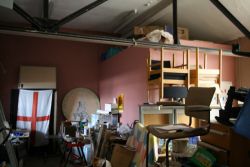
Photo 4: The English Room Mural – now restored but having no function other than storage.
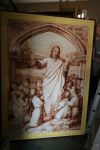
The old Chemistry Laboratory in which Jim "JEB" Baileff had interested me in Chemistry and in all things science was alas no more; its position is distinguished in Photo 5 by the unfinished concreting at the back. On the subject of demolition, the old bike shed had gone, and a group of local youngsters were employed in work experience activities cementing the back wall (Photo 6).
Photo 5: The Missing “Chemistry Lab” Block
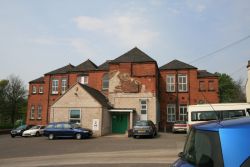
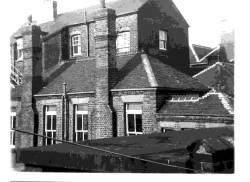
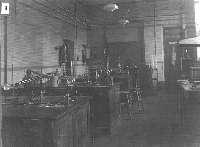
Photo 6 – No More a Bike Shed!
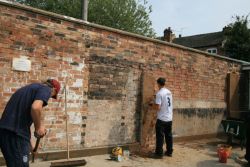
I was lucky enough to have the opportunity to go inside the main building – which apart from a few nostalgic views to the outside through stained glass windows, was almost unrecognisable as its former self. I was struck by the much narrower “Assembly Hall”, which now serves as a meeting room, but was still distinguishable by the “never used front door” that has survived (Photo 7). More important was the view to Burslem Park that had not changed much at all, and that little old sub-gate was far more important to most of us since it led in three directions – first to the lunchtime lawn bowls, second to the 6th form afternoon tennis courts, and last but not least as the starting point for the route march to Stanfields (Photo 8).
The lower floor is no longer distinguished by the presence of a staircase, it is behind the wall of the left-side wall of the Meeting Room. But whilst I was on this floor level I went to see Eddy Twyford’s Language Room, for me German, for others later French. Vandalism has clearly been a major problem for BCDT and hence the massive barricades now attached to each window (Photo 9).
Photo 7: The Old Assembly Hall and Unused Front Doors – now serving as a meeting Room
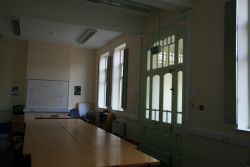
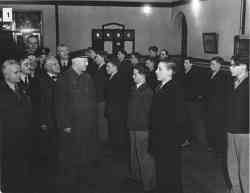
Photo 8: Burslem Park sub-Gate and the Old School “fence”.
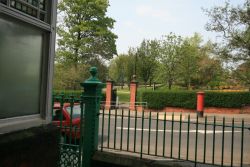
Photo 9: Eddy Twyford’s “Language Laboratory”
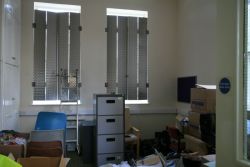
Orientation upstairs proved quite difficult to fathom, and hence my comment earlier about looking outside. Photo 10 is on the far left side of the building looking to the front. I recall this as Jack Simnett’s English Classroom, but it had windows at the front and not to the side. The Room in Photo 10 is the nearest that my imagination would let me find. Much easier were the windows at the front of the building that used to form part of the small library that we established in the 1950’s (Photo 11). The stained glass is the “original”.
Photo 10: Possibly a reoriented Jack Simnett English Classroom
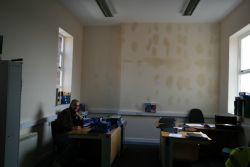
Photo 11: The View to Burslem Park from the Old Library Area
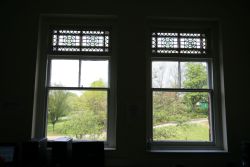
As many of the photographs show, although BCDT took over the restoration of the building in 1995, the scene appears to continue to be one of work in progress. Indeed, the current occupancy of the building also appears marginal, although I did not address that question during the visit. What I did learn is that the future of the building probably is in doubt. There are property speculators who see Haywood House and the surrounding Victorian Terrace houses behind these buildings as a site for future housing development – even a block of flats? Personally, I suggest that “The Tech” buildings as we knew them are no longer anymore anyway, and I suppose the next generation may not be concerned about “our nostalgia” either.
As if to exacerbate the situation, I suspect that many readers may not know that the “old” first strip at the Stanfield’s site was discovered to be suffering from concrete cancer, and was demolished when the new entrance façade was added to the building. The old “strip” occupied the site of the Car Parking area shown on Photo 12 right along through the “new” building shown.
Photo 12: Site of the “old Strip” at Stanfields.
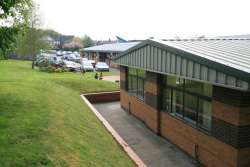
For people like me who either taught at the Stanfields site, or who knew no other building I was more than happy to meet a current Headmaster who has distinguished the school in the old terms as a comprehensive Engineering College for students to the age of 16. While the old traditions of “The Tech” are probably never to be restored some elements to distinguish the school from all others in the area appear to be destined to continue. It is this element that I envisage may save the school from the proposed mergers and relocation that became such an issue at the beginning of 2007.
Photo 13: The outer Chem Lab as I knew it
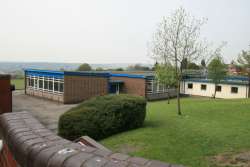
On the other hand as an old Chemistry Master, short contract as it may have been, I was disappointed to find that even the “new” labs had been converted to something looking more like a classroom than was the case when Jim "JEB" Baileff finally built the lab of his dreams. Today, no benches, no taps, no gas lines, and no emergency shower were to be seen. The outer and inner “old lab” are shown in the Photos 13 and 14. However, as we all know times have changed and the “old” has been replaced by the “Innovation Zone” CAD-CAM Room, and training in electronics, which I have attempted to summarise in Photos 15, 16 and 17.
Photo 14: No “Traditional” Chem Lab Benches! – but still a Science Room
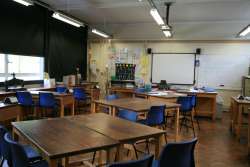
Photo 15: The highly computerised ‘Innovation Zone’ – that also serves to train parents after hours.
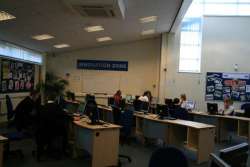
Photo 16: CAD-CAM Training – they even had a Laser cutting machine in the adjacent room.
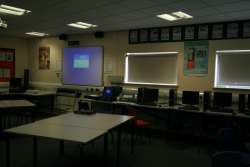
Photo 17: Fundamental Electronics in Class.
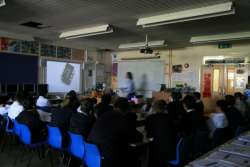
Identification Please?
On a final point of curiosity – the “old” City of Stoke-on-Trent inheritances from the past continue to raise their ugly heads. You will all be aware of the fact that prior to the “big” coal mining of the 1930’s onwards, the district was pitted (excuse the pun) with numerous little mine shafts that were sealed off at their heads with wooden beams and then the last 10 to 20 feet of the tops covered with earth. It was well known that the “fields” behind Sandyford and on the way up to Pitshill were full of such structures which occasionally collapsed to be 100 - 200 foot holes – but amazingly seldom did they take a life. It turns out that two such ‘pit heads’ have been found on the grounds of Stanfields, and one of these forms the under “structure” of part of the building shown in Photo 18. Can anyone identify what the paved area might have been used for in the 1960’s on?? Its location might be best sighted in Photo 19 that includes the far left corner of the “covered hole”.
Photo 18: Unidentified working area of the school under which lay a pit
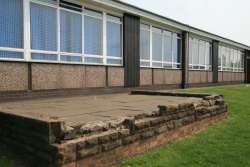
Photo 19: Location of the Pithead relative to other buildings.
